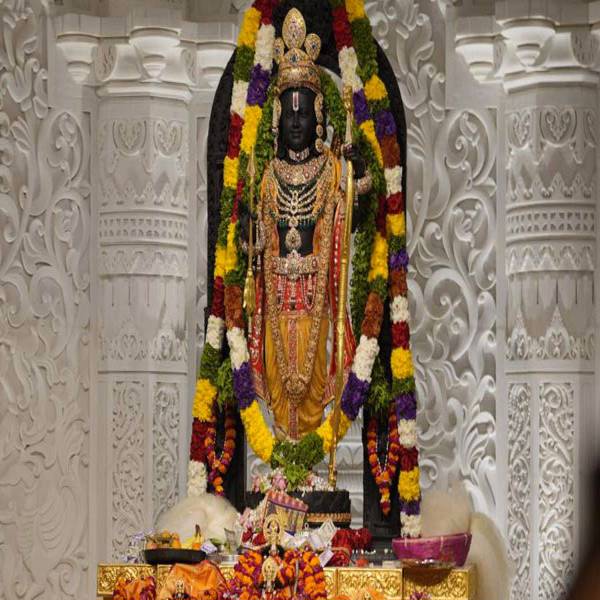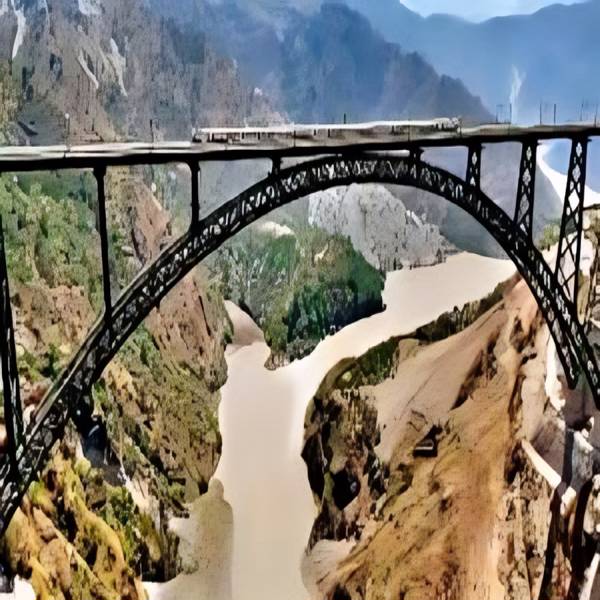On the occasion of Ram Navami, a unique event took place at the grand Ram Temple in Ayodhya. A beam of sunlight, known as ‘Surya Tilak,’ was directed onto the forehead of the Ram Lalla idol at noon.
In a remarkable feat of science and faith, a team of ten Indian scientists created a special apparatus using mirrors and lenses. This device precisely directed a 5.8-centimeter beam of sunlight onto the forehead of the Ram Lalla idol for approximately 3.5 minutes around noon on Ram Navami. This unique event, known as ‘Surya Tilak,’ marked a significant moment for devotees celebrating the auspicious occasion.
Temple authorities collaborated with scientists from a renowned Indian institute to create a remarkable device. This intricate system, comprised of meticulously aligned mirrors and lenses, successfully focused sunlight onto the idol’s forehead during Ram Navami. Officially named the ‘Surya Tilak mechanism,’ it represents a noteworthy achievement at the intersection of science and engineering.
Director of the Central Building Research Institute (CBRI) in Roorkee Dr. Pradeep Kumar Ramacharla and a leading scientist, shed light on the complexities of the optomechanical system behind the Surya Tilak ceremony.
The system behind the Surya Tilak ceremony is quite ingenious,” explained Dr. Ramacharla. “It’s an opto-mechanical system, meaning it uses a combination of optics and mechanics. Imagine four mirrors and four lenses working together inside a specialized housing with a tilting mechanism. This entire apparatus is positioned on the top floor of the temple. Sunlight enters through the opening, and these mirrors and lenses precisely redirect the rays to illuminate the Garbha Griha.”
Dr. Ramacharla explained the final step: precisely focusing sunlight onto the idol. A combination of the last lens and mirror acts like a zoom lens, concentrating the beam right on Lord Rama’s forehead. Here’s the ingenious part: an adjustable mirror steers the sunlight initially northward. This yearly adjustment compensates for the sun’s slightly different position on each Ram Navami, guaranteeing perfect alignment for the Surya Tilak ceremony.
The system was designed for longevity. High-quality, long-lasting mirrors and lenses were chosen to ensure durability. To minimize wear and tear, all pipes and other internal components are made of brass. A black powder coating on the inner surfaces of pipes, bends, and enclosures prevents stray sunlight from reaching the idol. An infrared filter at the top opening further protects the idol’s forehead by blocking heat waves.
The ‘Surya Tilak’ mechanism wasn’t a solo act. Scientists from the Central Building Research Institute (CBRI) in Roorkee joined forces with the Indian Institute of Astrophysics (IIAP) in Bengaluru to make it happen. Their goal is to Channel sunlight precisely. Using specialized mirrors, lenses, and a gearbox, they devised a system that tracks the sun’s movement and redirects its rays from the temple’s third floor down to the inner sanctum (Garbha Griha). This feat relied on established principles of solar tracking. Technical guidance from the Indian Institute of Astrophysics and manufacturing expertise from Optica, a Bengaluru-based company, were crucial in bringing this ingenious plan to life.
Since Ram Navami falls on a different date each year based on the lunar calendar, the scientists faced a unique challenge. To ensure the ritual occurs precisely at noon every year, they devised an intricate gear system with 19 components. Impressively, this mechanism operates entirely without electricity, batteries, or even iron-based components
Bridging the gap between calendars: The Indian Institute of Astrophysics (IIA) in Bengaluru, India’s leading institution for astronomy, played a key role in overcoming a challenge. Ram Navami’s date changes every year based on the lunar calendar, which doesn’t always align perfectly with the solar calendar we typically use. Dr. Annapurni Subramaniam, Director of IIA, explained, “Our expertise in positional astronomy, which tracks the movements of celestial bodies, was crucial here. We helped ensure the sunlight would precisely illuminate the idol of Ram Lalla on every Ram Navami.”
The ‘Surya Tilak’ project was a collaborative effort. The core team from CSIR-CBRI comprised scientists Dr. SK Panigrahi, and Dr. RS Bisht, and engineers Mr. Kanti Solanki, Mr. V. Chakradhar, Mr. Dinesh, and Mr. Sameer. Their efforts were guided by Prof. R. Pradeep Kumar, Director of CSIR-CBRI.
From the Indian Institute of Astrophysics (IIA) in Bangalore, Dr. Annapurni Subramaniam (Director), Er. S Sriram and Professor Tushar Prabhu provided valuable consulting expertise.
Finally, Rajinder Kotaria, Managing Director of Optica, along with his team members Mr. Nagraj, Mr. Vivek, and Mr. Thava Kumar, played a crucial role in executing and installing the mechanism.
Also read: Unveiling the Mechanism of the Surya Tilak at Ayodhya’s Ram Mandir
The concept of Surya Tilak, or using sunlight for ceremonial purposes, isn’t entirely new. We can find similar mechanisms in some Jain temples and the Sun Temple at Konark, though their engineering approaches differ from the ones employed at the Ram Temple.



